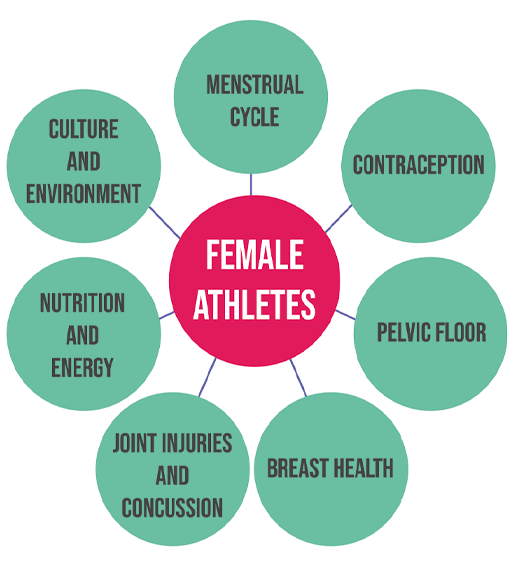2 It does not have to be this way!
Sport and society have progressed far beyond these concepts of women being too weak to play sport. Events of the last century have shown that women are equally as capable as men to participate in all sports. However, for women and men to have equal opportunities to fulfil their potential in sport, we must have an equal understanding of women’s and men’s bodies. These differences are often ignored in medical and sport science research as they are seen to increase the complexity of research. Figure 3 shows some of the topics that need to be considered when supporting female athletes who are training for or competing in sport.
Activity 2 What if?
Consider how much more progress would have been made if women and coaches had understood the elements outlined in Figure 3 which represents the contents of this course.
Discussion
While it is difficult to fully assess the impact that understanding more about females and the factors that impact on their sports performance, it is very likely that with an increased understanding, we would have seen higher participation rates and more rapid improvements in performance.
The safety of female athletes and their health is compromised by the lack of research and knowledge that exists. For example, females’ physical and biomechanical differences to males leave them more at risk of joint injuries and concussions, their reproductive function can be affected by their nutritional status and energy availability, and this is turn impacts on bone health. These topics will be explored in the upcoming sessions.
Let’s explore how and why these topics have been overlooked for so long.


